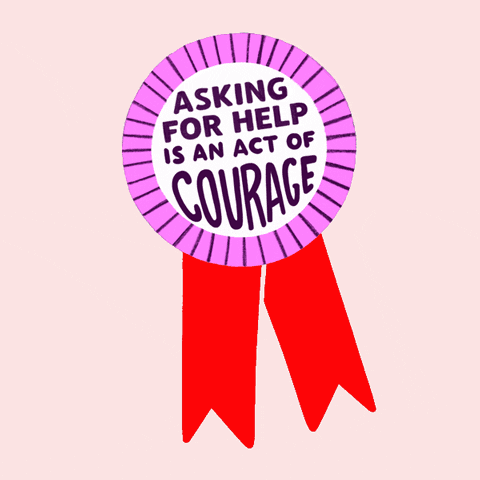Tantrums Into Triumphs: Navigating the Wild World of Toddler Meltdowns
So, currently, I’m dealing with a toddler and I can safely say that as a parent, grappling with toddler tantrums can feel like navigating through a minefield. One moment, your little angel is playing happily, and the next, they're throwing a full-blown temper tantrum, complete with kicking, screaming, biting, throwing, etc.
So, what's the science behind these meltdowns? And how do we cope? Here’s the deal…
Common Triggers for Toddler Tantrums
Rest assured that tantrums are a normal part of a toddler's development. They occur because young children have limited communication skills and struggle to express their emotions effectively. When they are overwhelmed, frustrated, or tired, they resort to throwing tantrums as a way to release their pent-up feelings.
While these flare-ups can seemingly erupt out of nowhere, there are common triggers that parents and caregivers should be aware of. Hunger, fatigue, and overstimulation are frequent culprits for outbursts in toddlers. Additionally, they may throw tantrums when they are denied something they want or when their routine is disrupted.
Keep in mind, however, that it's important to remember that each child is unique, and what triggers tantrums in one may not affect another. (My son, for instance, gets super agitated when he’s overtired. When he’s hungry though, he’ll just tell me or indicate that he wants to eat. He doesn’t necessarily throw a fit.) By observing your child's behavior and identifying their specific triggers, you can better anticipate and manage tantrums before they escalate.
Dealing with Tantrums in Different Settings
Tantrums can happen anywhere, from the comfort of your own home to the most crowded public spaces. As a parent, teacher, or caregiver, it's crucial to adapt your approach depending on the setting.
Personally, at home, I try create a calm and safe environment for my child. (The keyword here is “try”). I try to establish clear boundaries and routines that provide structure (which children actually love) and consistency. When a tantrum does occur, I strive to remain calm and offer comfort and reassurance (although, I’m going to be completely honest when I say…this can be quite a challenge at times… but it is worth at least practicing this approach. Exercising your patience and deescalating the situation works well in the long run and the more you attempt it, the more skilled and resourceful you become). Distraction techniques, such as engaging them in a new activity or redirecting their attention, can also be effective in diffusing tantrums at home.
In public, it's natural to feel self-conscious when your toddler throws a tantrum. It’s also totally embarrassing (at least for me)!
However, again, although it’s tough in the moment, it's important to remember that tantrums are a normal part of development. Stay calm and avoid giving in to your child's demands just to end the tantrum quickly. I know this sounds counterintuitive, but instead, calmly remove them from the situation if possible or find a quiet corner where they can calm down. Offering a comforting presence and acknowledging their feelings can help them feel understood.
Check Out These Strategies for Coping with Toddler Tantrums in Public
Handling toddler tantrums in public requires a different set of strategies compared to dealing with them at home. Here are a few techniques that can help you (and have definitely helped me) navigate these challenging situations:
Stay calm: It's easy to feel embarrassed or frustrated when your child throws a tantrum in public. However, losing your cool will only escalate the situation. Take deep breaths, remind yourself that tantrums are normal, and stay composed.
Set expectations: Before heading out, try talking with your toddler about what behavior is expected in public. Keep it simple and age-appropriate. Remind them of the rules and consequences, so they can begin to understand the boundaries. (REMEMBER: Do not underestimate your little one! They may comprehend more than you think they do. Also, the more you talk with them, the more they will begin to understand and recognize what behavior is acceptable.)
Distract and redirect: When an outburst erupts, you can try to divert your child's attention to something else. Offer a favorite toy or engage them in a game or song. Redirecting their focus can help diffuse the tantrum and shift their mood. For my son, talking about cars, numbers, and colors can help, as well as singing his favorite songs.
Offer choices: Toddlers love to assert their independence. Instead of getting into a power struggle, offer them limited choices. For example, ask if they want to hold your hand or walk beside you. This gives them a sense of control and can prevent tantrums triggered by feeling powerless.
Plan ahead: If you know that certain situations or places tend to trigger tantrums in your child, plan accordingly. Bring along their favorite snacks or toys to keep them occupied. If you can, consider the timing of outings to avoid their usual nap or meal times.
By employing these strategies and staying patient, handling toddler tantrums in public can become less stressful for both you and your child.
Helping Your Toddler Express Their Emotions
Tantrums often occur because toddlers struggle and do not yet have the capacity to express their emotions in a healthy and constructive way. As a parent, teacher, or caregiver you can help your child learn to communicate their feelings effectively. Here's how:
Label emotions: Teach your toddler to recognize and name their emotions. Again, this goes back to ensuring you consistently talk to your toddler. Use simple words like "happy," "sad," or "angry" to describe how they might be feeling. This can help them develop emotional intelligence and begin to communicate their needs better.
2. Model appropriate behavior: Children learn by watching (especially their parents and prominent adults in their lives). Demonstrate healthy ways to express emotions by talking about your own feelings and how you manage them. For example, you can say, "I felt frustrated, so I took a deep breath and counted to ten." This has helped with my kiddo, especially since I know he’s way into numbers! Use what specifically works for your child.
3. Encourage verbalization: Encourage your child to use words to express their emotions instead of resorting to tantrums. Prompt them to communicate by asking open-ended questions like, "How are you feeling?" or "What made you upset?"
4. Validate their feelings: When your toddler expresses their emotions, validate their feelings and let them know you understand. This helps them feel heard and acknowledged, reducing the need for tantrums as a means of communication.
Teaching Your Toddler Alternative Ways to Cope with Frustration
Frustration is a common trigger for tantrums in toddlers. By teaching your child alternative ways to cope with their frustration, you can help them develop healthy coping mechanisms. Here are a few strategies you can try:
Deep breathing: Teach your toddler deep breathing exercises to help them calm down when they feel frustrated. Show them how to take slow breaths in through their nose and exhale through their mouth. I’m a firm believer in meditative practice, so this is “go to” for me. However, remember…any thing you attempt to teach will take time for them to learn and then begin to practice naturally on their own.
Counting or singing: Encourage your child to count or sing a favorite song when they feel frustrated. This can divert their attention and provide a sense of comfort. As mentioned, this is probably my son’s favorite way to decompress.
Physical activities: Engaging in physical activities can help release pent-up energy and frustration. Encourage your child to jump, run, or dance when they're feeling overwhelmed. Just make sure it’s done safely!
Provide a calm-down space: Create a designated area in your home where your child can go to calm down when they feel frustrated. Fill it with calming items like soft pillows, books, or stuffed animals.
By teaching your toddler alternative ways to deal with frustration, you empower them to manage their emotions in a healthy manner, reducing the frequency and intensity of temper tantrums.
Preventing Tantrums Through Routine and Structure
Establishing a routine and providing structure can go a long way in preventing tantrums in toddlers. Predictability and consistency help children (and adults) feel secure and in control, reducing their need to act out.
So this is a HUGE one for me, especially as a single mom that does just about everything on her own. It definitely helps to have some organization and predictable patterns for my little one (and also for me).
Here are some tips on how you can create a routine that minimizes tantrums:
Set a daily schedule: Have consistent waking up, eating, nap, and bedtime routines. This helps your child know what to expect and reduces surprises that can trigger flare-ups..
Offer choices within limits: Allowing your child to make choices within predetermined limits gives them a sense of control and autonomy. For example, you can ask, "Would you like to wear the blue shirt or the red shirt today?"
Transition with warnings: Prepare your child for transitions by giving them warnings beforehand. For example, let them know that playtime will end in five minutes. This gives them time to adjust and minimizes resistance. (I actually have sand timers that are broken down into 30, 15, 10, 5, and 1 minute intervals. This provides a child with the visual representation of the passage of time and allows for the preparation of the end of an activity, particularly since the child can “see” when their time is running out based on how much sand is left at the top of the glass).
4. Prepare for outings: If you're going out, involve your child in the process. Let them know what to expect, where you're going, and how long you'll be out. This helps them mentally prepare and reduces anxiety.
By incorporating routine and structure into your toddler's life, you create a sense of predictability that can prevent tantrums and promote overall well-being.
Communicating with Your Toddler During a Tantrum
During a tantrum, communication becomes challenging as your child may be overwhelmed by their emotions. However, it's essential to maintain a connection and attempt to understand their needs. Here are some tips for effective communication during tantrums:
Stay calm and composed: Your child looks to you for guidance and reassurance. Maintain a calm and composed demeanor, as your own frustration can escalate the situation.
Use simple language: Keep your language simple and age-appropriate. Use short sentences and clear instructions to help your child understand what you're saying.
Acknowledge their feelings: Let your child know that you understand how they're feeling. Use phrases like, "I see that you're upset" or "I understand that you're frustrated." This shows empathy and can help de-escalate the tantrum.
Offer comfort and reassurance: Physical touch and a soothing voice can provide comfort to your child during a tantrum. Offer a hug or a gentle pat on the back while speaking in a calm and reassuring tone.
Wait for the storm to pass: Sometimes, your child may need time to calm down before they can effectively communicate. Be patient and wait for the tantrum to subside before attempting conversation.
Remember, effective communication during a tantrum may not always yield immediate results. However, by maintaining a connection and showing empathy, you lay the foundation for better communication skills in the long run.
Seeking Support for Managing Toddler Tantrums
Managing toddler tantrums can be challenging, and it's important to seek support when needed. Below are some avenues for support:
Parenting groups: Join local parenting groups or online communities where you can connect with other parents facing similar challenges. Sharing experiences and advice can provide valuable support and reassurance.
Parenting books: There are numerous books available on toddler behavior and tantrum management. Look for reputable sources that offer evidence-based strategies and practical tips.
Professional help: If tantrums persist and significantly impact your child's well-being or family dynamics, consider seeking professional help. A pediatrician, child psychologist, or behavioral specialist can provide guidance tailored to your child's specific needs. I can help, too…just reach out to me here.
Remember, seeking support is not a sign of weakness but a proactive step towards ensuring the well-being of both you and your child.
Managing toddler tantrums requires patience, understanding, and adaptability. By understanding the science behind these tantrums, identifying triggers, and employing effective strategies, you can navigate the wild world of toddler meltdowns with confidence.
Remember, you're not alone in this journey, and seeking support when needed is a sign of strength. Together, let's turn tantrums into triumphs!
How do you cope with your toddler's tantrums? Let me know here.







